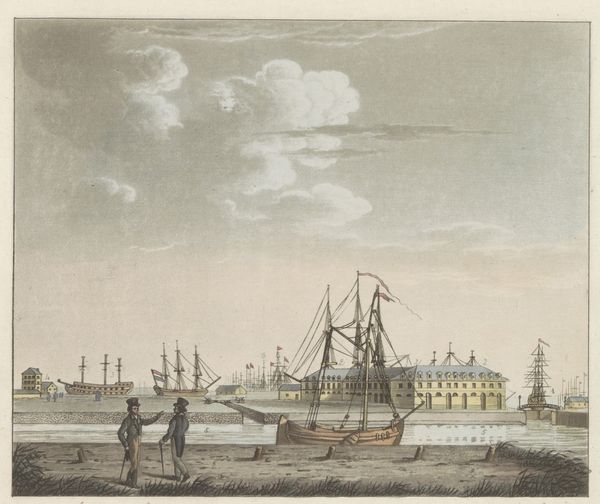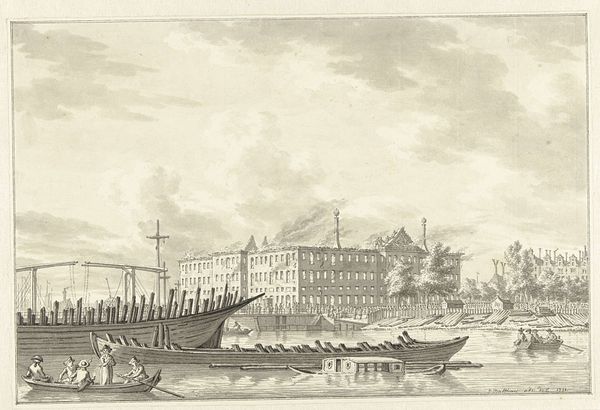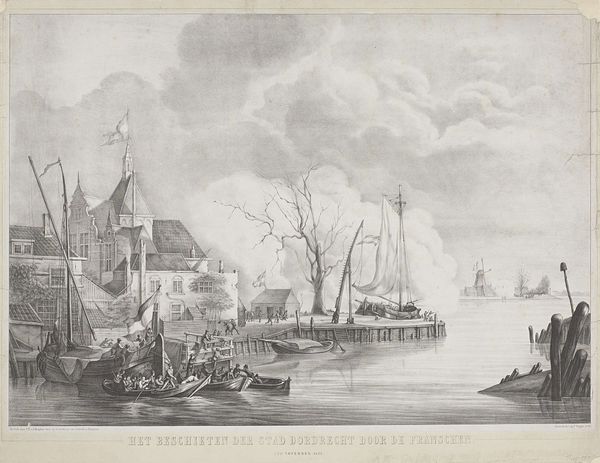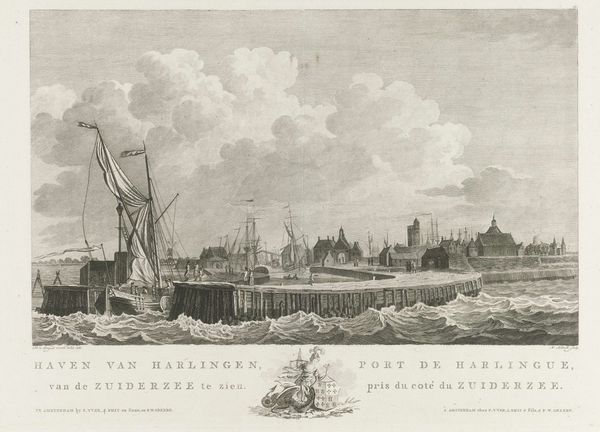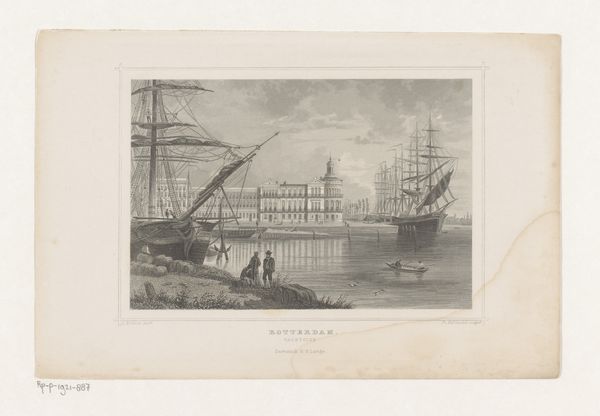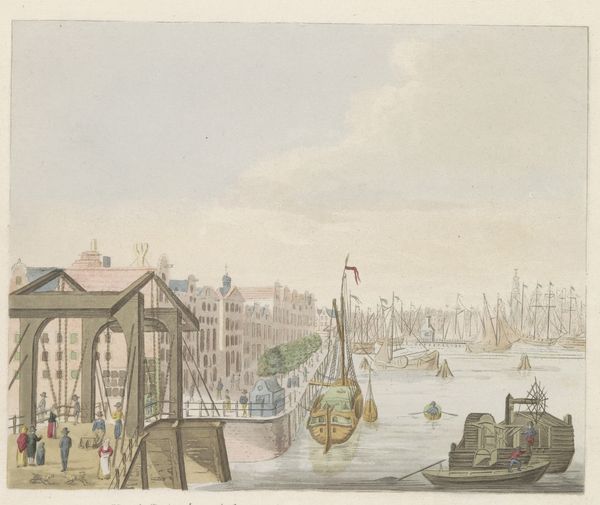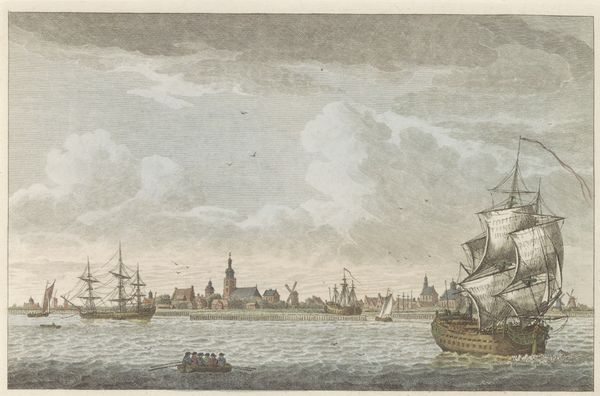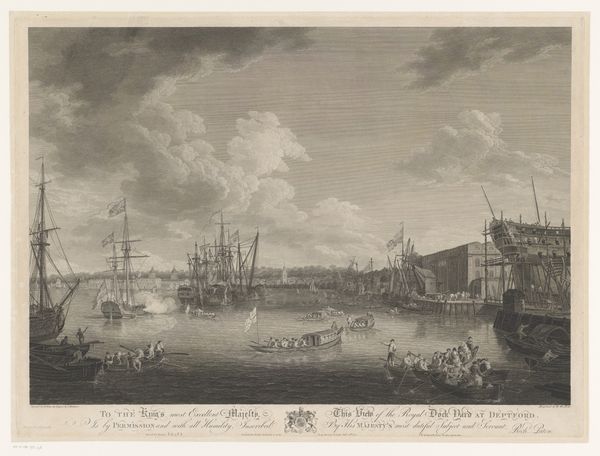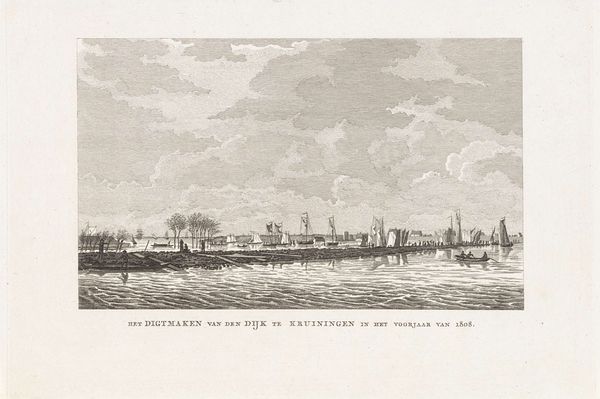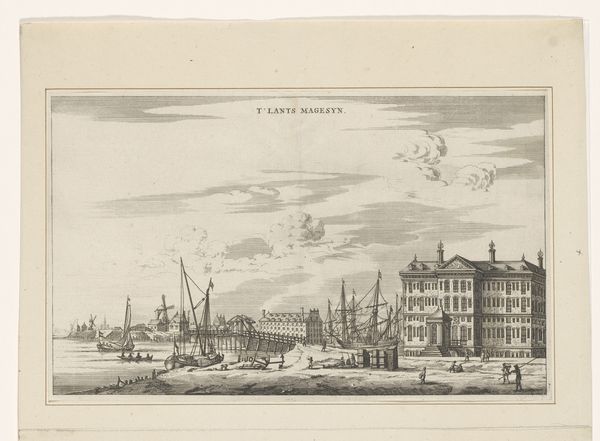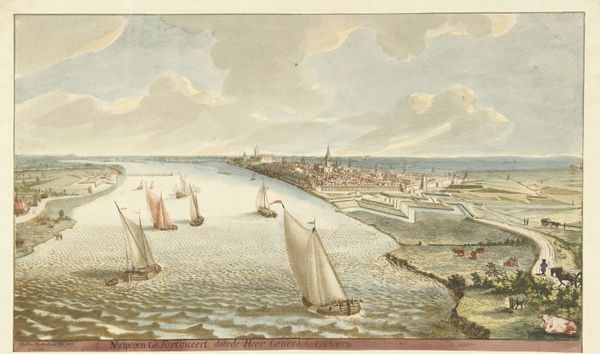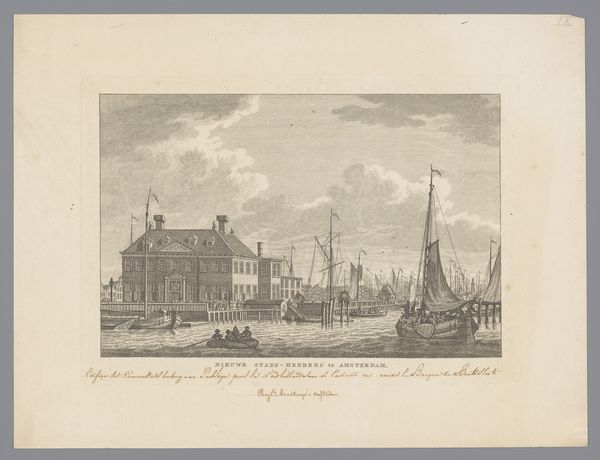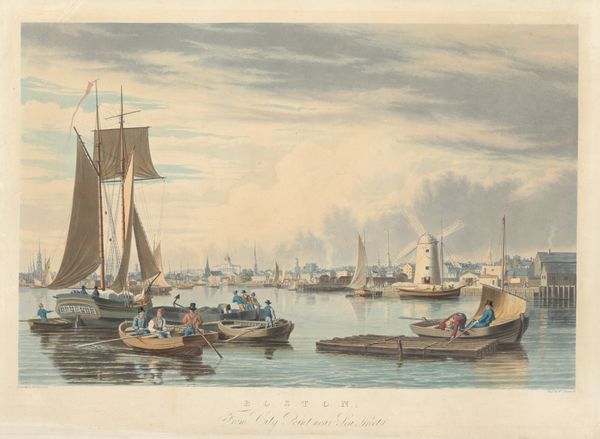
painting, watercolor
#
dutch-golden-age
#
painting
#
landscape
#
river
#
watercolor
#
cityscape
#
watercolour illustration
#
watercolor
Dimensions: height 323 mm, width 485 mm
Copyright: Rijks Museum: Open Domain
Curator: Up next we have, "View of the Groothoofdspoort in Dordrecht", dating sometime between 1845 and 1904, we believe by Christiaan Bos. What's your first impression? Editor: Misty. Evocative. It's that sort of serene quietude that cloaks harbors in the early morning. I like that there are clear signs of industrial life alongside traditional sailing vessels. Curator: Indeed. The steam from the boats juxtaposed with the sails reminds us of the transition underway during this era, and also speaks volumes about the Netherlands’ role as a major shipping hub. Visually, this work really plays into archetypes for liminality, right? The gateway between worlds... Editor: Absolutely. The Groothoofdspoort itself stands as this monumental symbol, a passage from the familiar domestic space of the city into the unknown watery expanse. The arch motif recurs again and again. The sails echo the main arched gate and really draw the eye. Even the tiny rowboat holds people heading out into a wider world. Curator: There's a vulnerability there, too. You know, rendered delicately in watercolor—which is always interesting with a monumental scene. The artist’s hand is visible, somehow heightening a feeling of temporal tenderness. As if any minute, the scene could just dissipate and transform again into something else. Editor: That vulnerability adds another layer to this doorway metaphor. Beyond trade and exploration, we’re confronted with a psychological crossing. Like a symbolic threshold, a quiet moment where decisions are made, futures diverge... it mirrors that strange internal space just before waking fully, suspended between realities. Curator: What lingers for me is this blending of time, the old and new interwoven, the enduring architecture overlooking the currents of both the river and time. It makes me contemplate change. It really makes you reflect on human progress, but in a melancholy, romantic kind of way, right? Editor: Melancholy yet hopeful. It's about journeys and returns, solid structures but open possibility. I love when art leaves us contemplating how past and present become future.
Comments
No comments
Be the first to comment and join the conversation on the ultimate creative platform.
